My Low-density lipoprotein (LDL, the bad fluffy cholesterol) is "out of this world" and has been rising the past five years.
My blood test results for the past five years, including two recent results taken a few days apart fasting vs. not fasting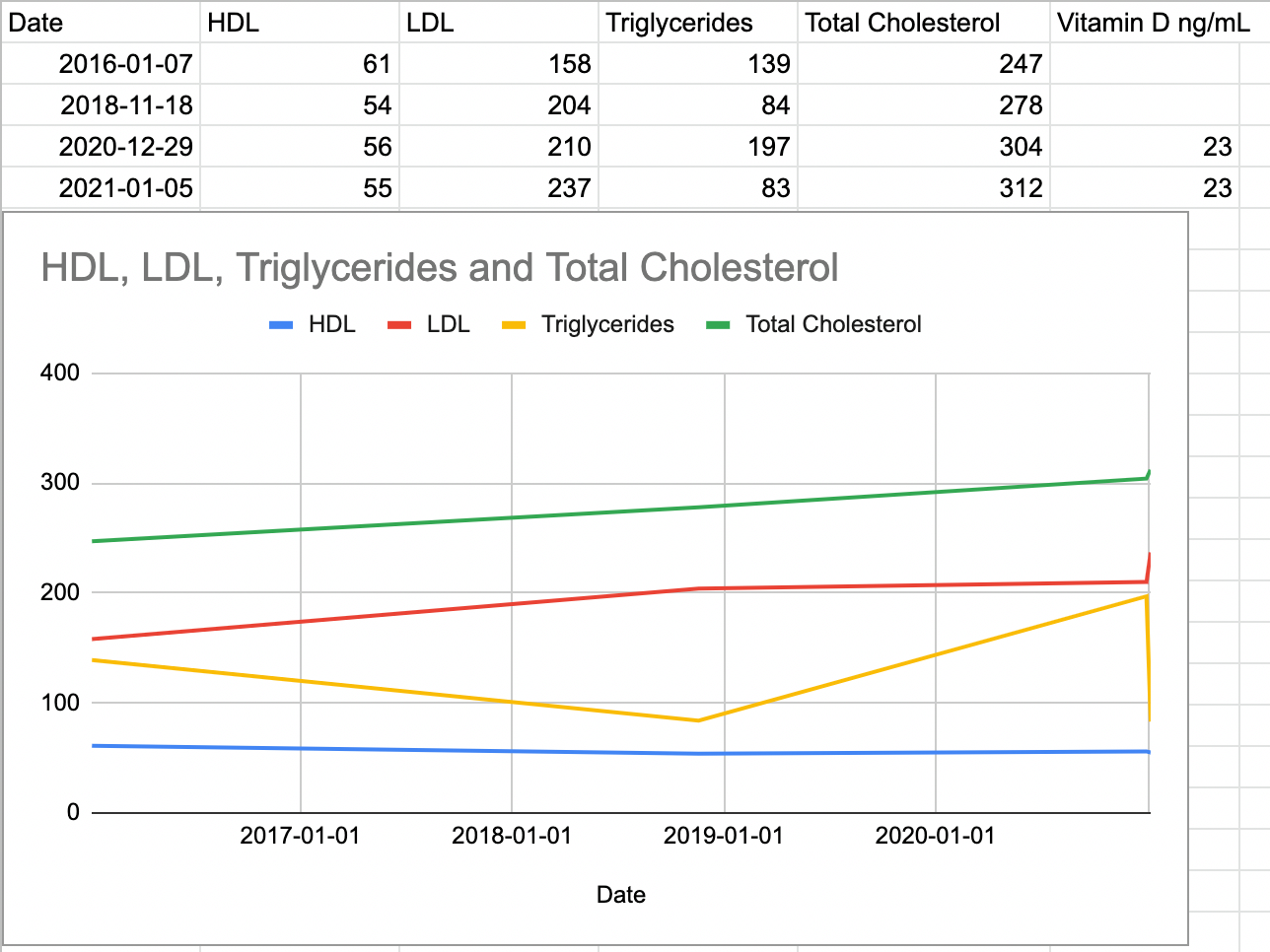
This is super concerning because higher "bad cholesterol" is commonly known to cause cardiovascular disease, which is statistically the thing I'm most likely to die from.
I was pretty spooked by this, especially since I've taken measures to lower my LDL after each blood test (like altering diet and upping cardio), so I started some research on how bad high LDL is if you're on a ketogenic diet.
From what I can find so far, it's not bad at all because of the primitive way LDL is measured.
In the presence of glucose LDL can be glycated to form glycated LDL and then oxidized to become damaged small dense oxidized LDL, which is the sticky LDL that causes clots. An excess of omega-6 fats can speed this process.
The test to determine which type of LDL you have involves a centerfuge and gel electrophoresis and is expensive and time consuming so standard blood tests don't measure which type of LDL you have.
Pattern A LDL has a single smooth peak in gel electrophoresis, which means you probably don't have glycated or oxidized LDL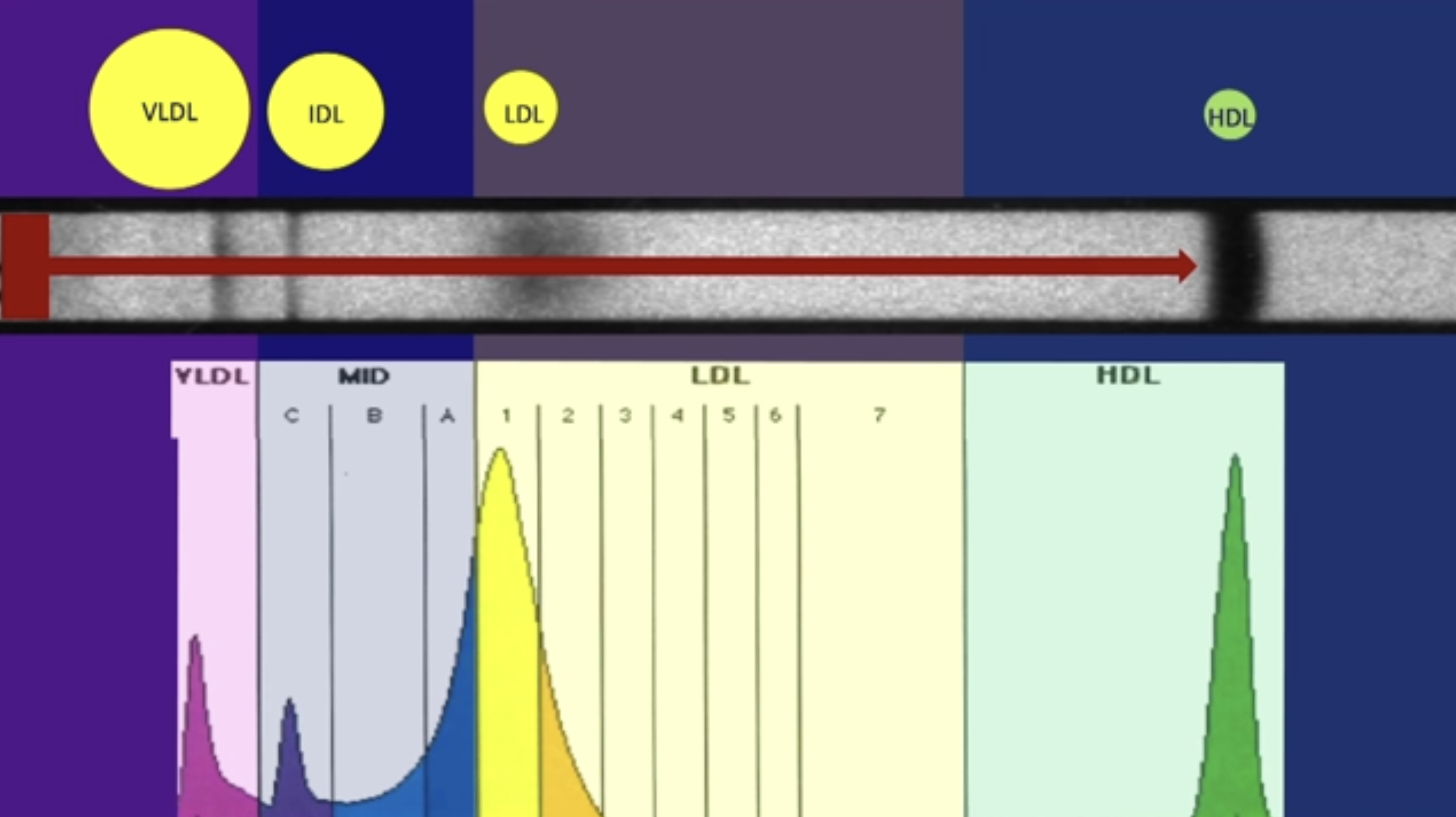
Pattern B LDL has three distinct peaks in gel electrophoresis, showing glycated and oxidized LDL damaged by sugar, which is dangerous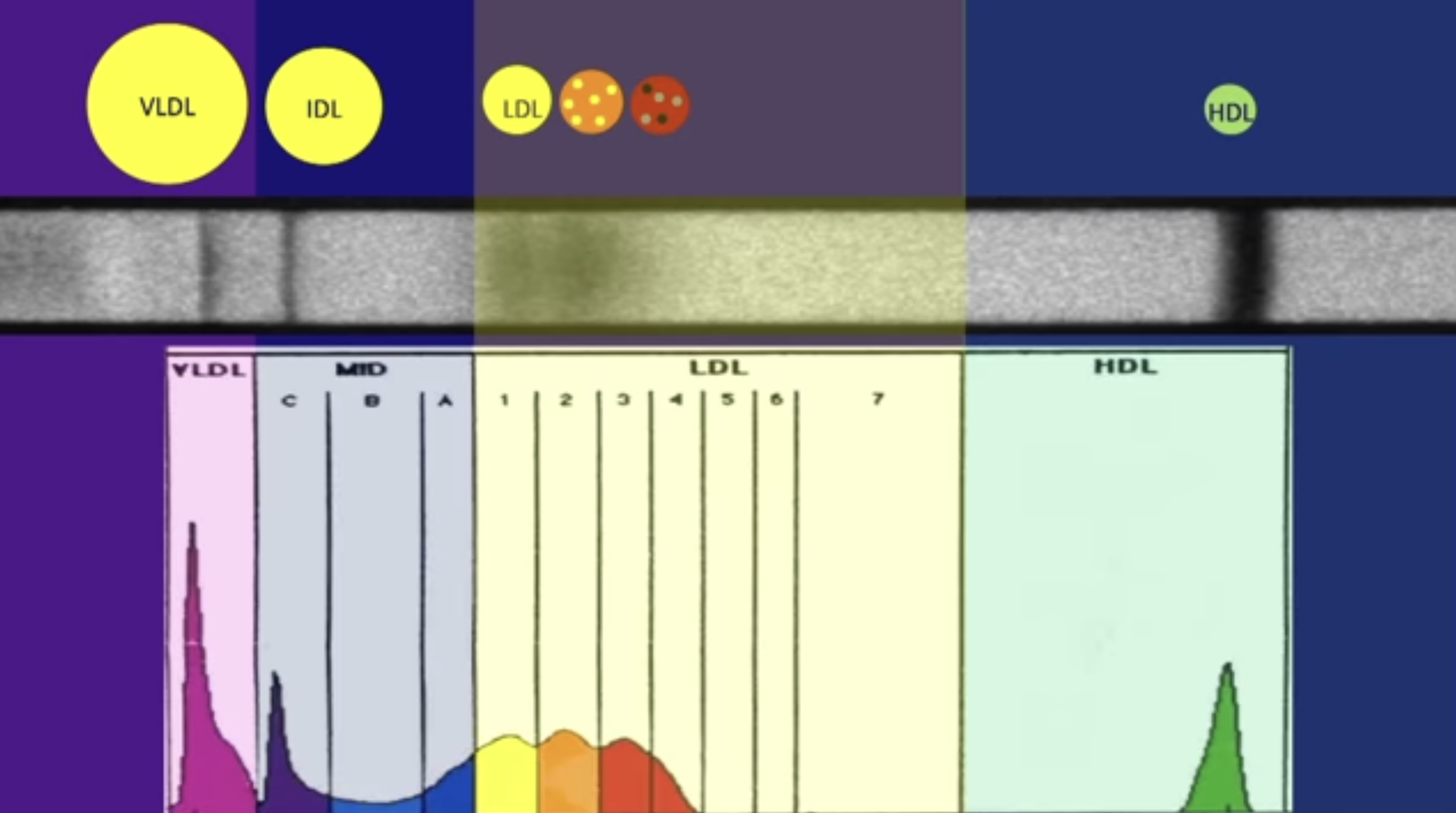
Your LDL pattern can be guessed from a standard blood test. If your triglycerides are below 40 mg/dL, you're likely pattern 1, and if they're above 180 mg/dL, you're likely pattern 2.
Cumulative Distribution of Adjusted Triglyceride Levels by ALP Phenotype. Austin, M.A., King, M.C., Vranizan, K.M., & Krauss, R. M. (1990). Atherogenic lipoprotein phenotype. A proposed genetic marker for coronary heart disease risk. Circulation, 82(2), 495-506.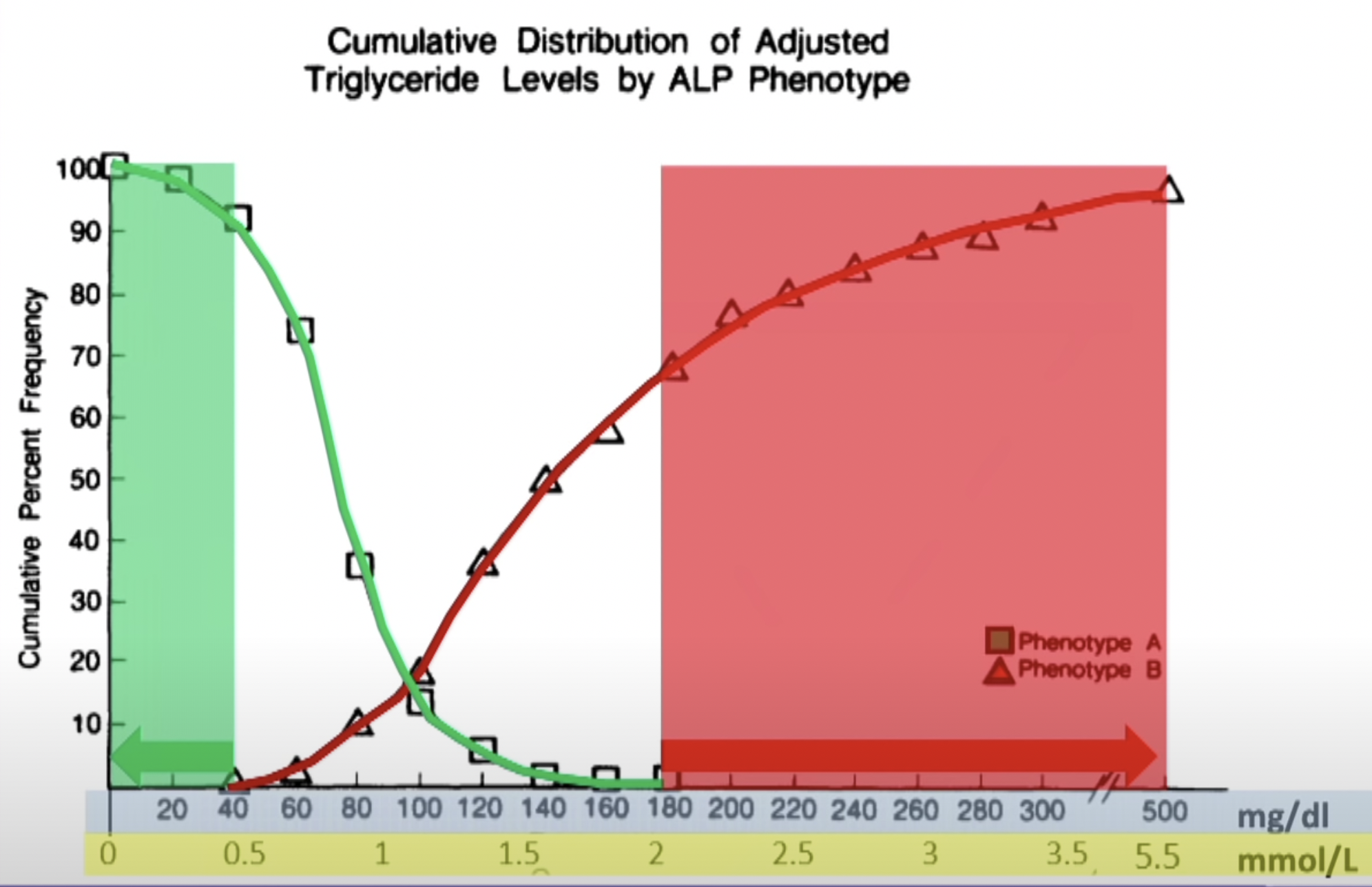
My triglycerides after fasting are 83 mg/dL, which is on the good side but not definitive.
Another way to guess pattern A or B from a standard blood test is from HDL levels: if your HDL is below 30 mg/dL, you're likely pattern B, and if your HDL is above 65 mg/dL, you're in pattern A.
Cumulative Distribution of Adjusted HDL Cholesterol LEvels by ALP Phenotype. Austin, M.A., King, M.C., Vranizan, K.M., & Krauss, R. M. (1990). Atherogenic lipoprotein phenotype. A proposed genetic marker for coronary heart disease risk. Circulation, 82(2), 495-506.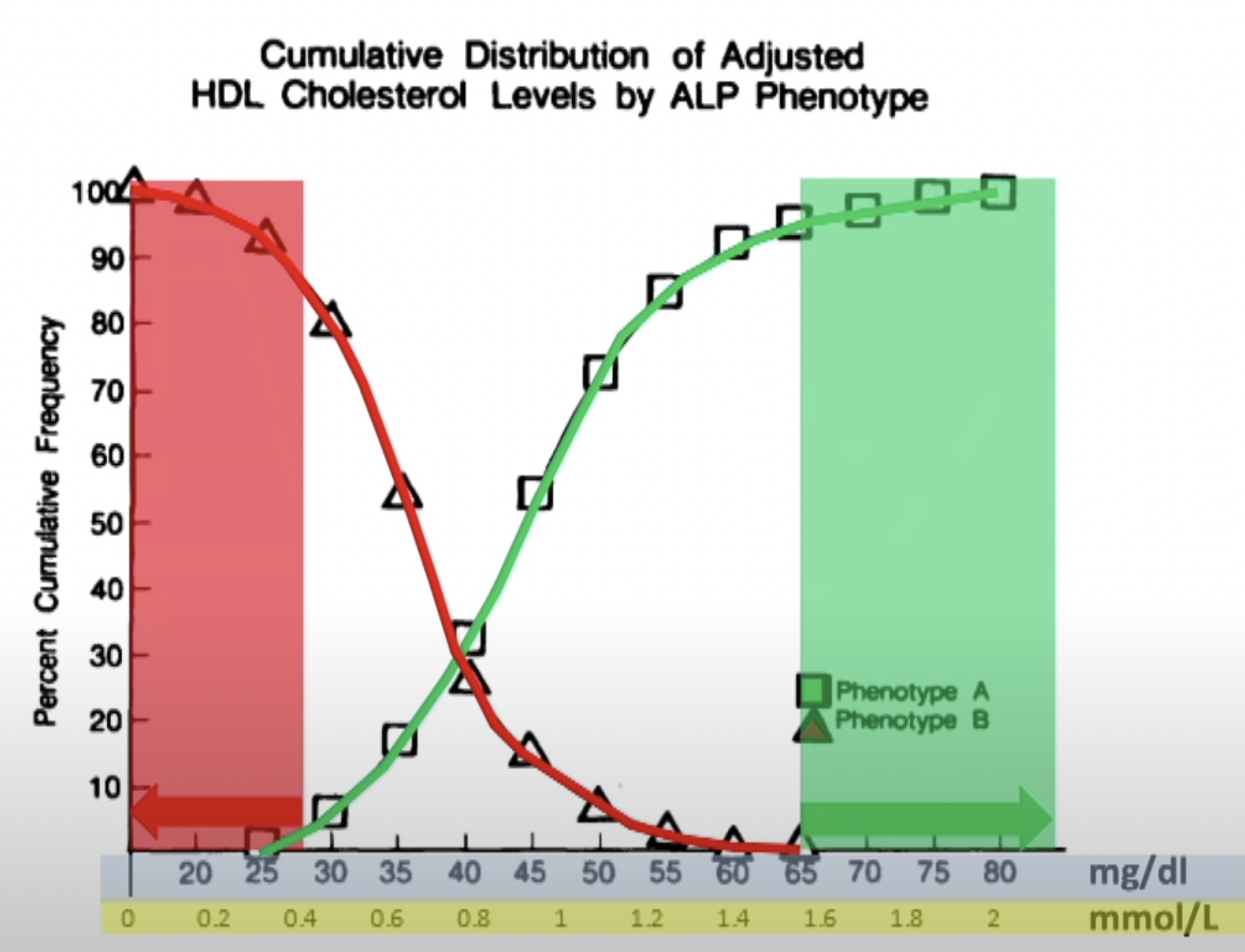
My HDL is 55 mg/dL, which looks pretty definitively in the pattern A category but it's not in the pretty green box yet.
The final proxy test is looking at the triglyceride to HDL ratio. If it's below 1.8, you're pattern A; it's above 4, you're pattern B.
Cumulative Distribution of Adjusted Triglyceride Levels by ALP Phenotype. Austin, M.A., King, M.C., Vranizan, K.M., & Krauss, R. M. (1990). Atherogenic lipoprotein phenotype. A proposed genetic marker for coronary heart disease risk. Circulation, 82(2), 495-506.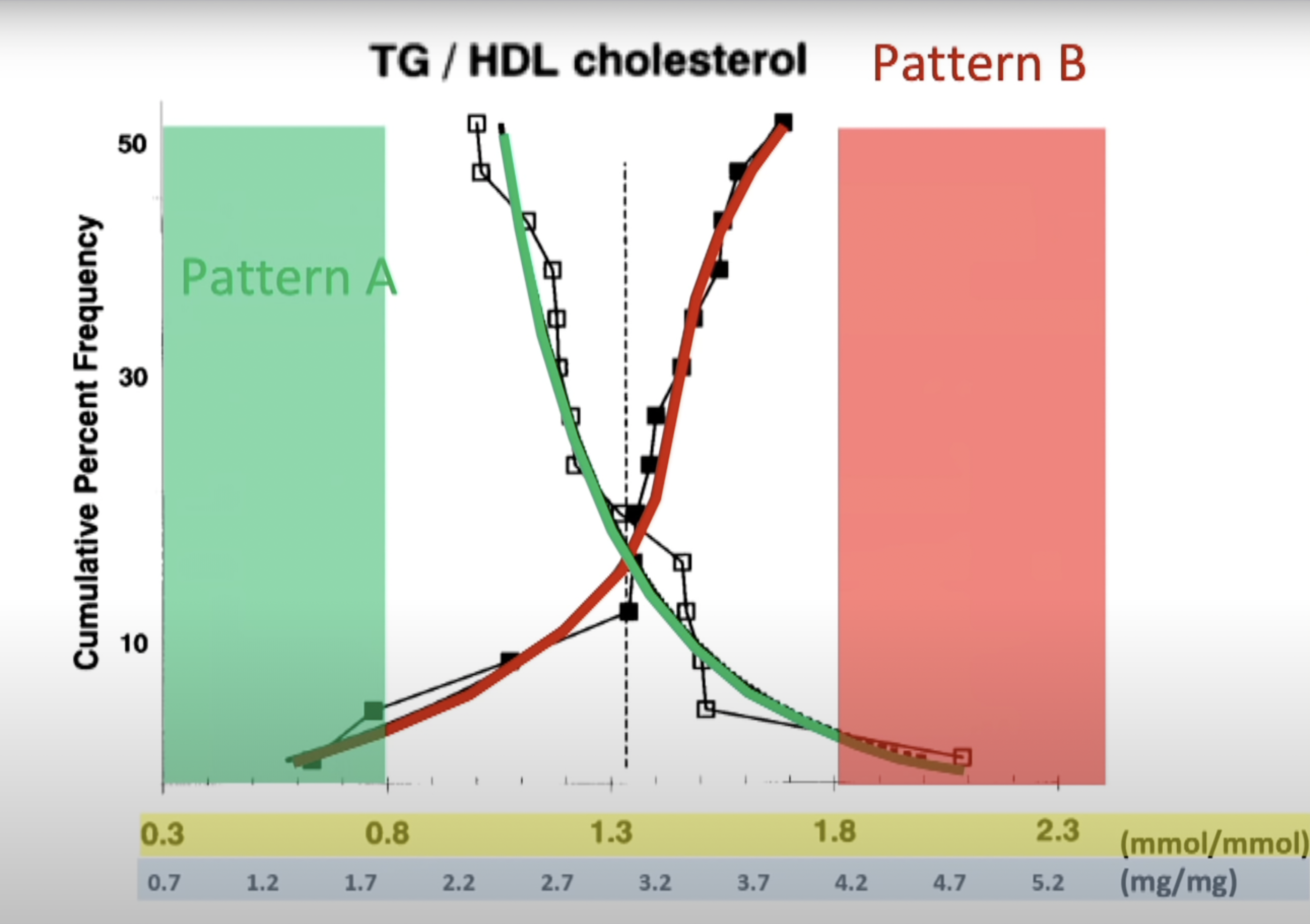
My triglyceride to HDL ratio is 55/83 = 0.7, which is very comfortably in the pattern A zone.
So: I feel fine about this now, and I'm conscious of sugar and carbs being especially bad for me now that I'm fat adapted with all this fluffy LDL wafting around in my blood ripe for getting gluconated.
Additionally, high blood cholesterol may be better for me than the reverse. A YouTube video about cholesterol in low carb diets cites several studies that have shown high cholesterol increasing longevity and decreasing cardiovascular disease risk.
6-year mortality by serum cholesterol shows that low cholesterol is coorelated with higher mortality. Cholesterol and all-cause mortality in elderly people from the Honolulu Heart Program: a cohort study.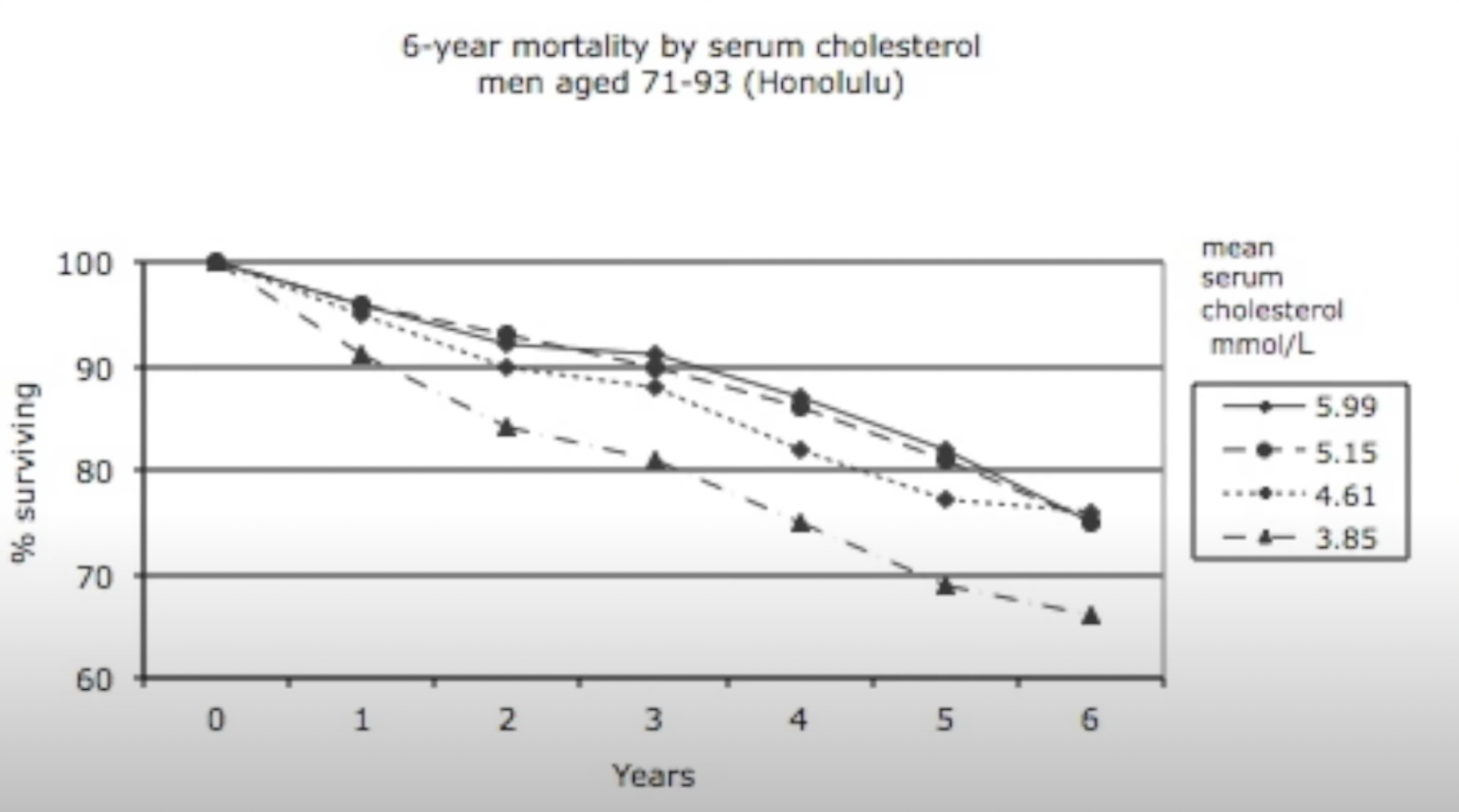
Of 136,000 patients admitted to a hospital for a coronary artery event, nearly 50% had low LDL.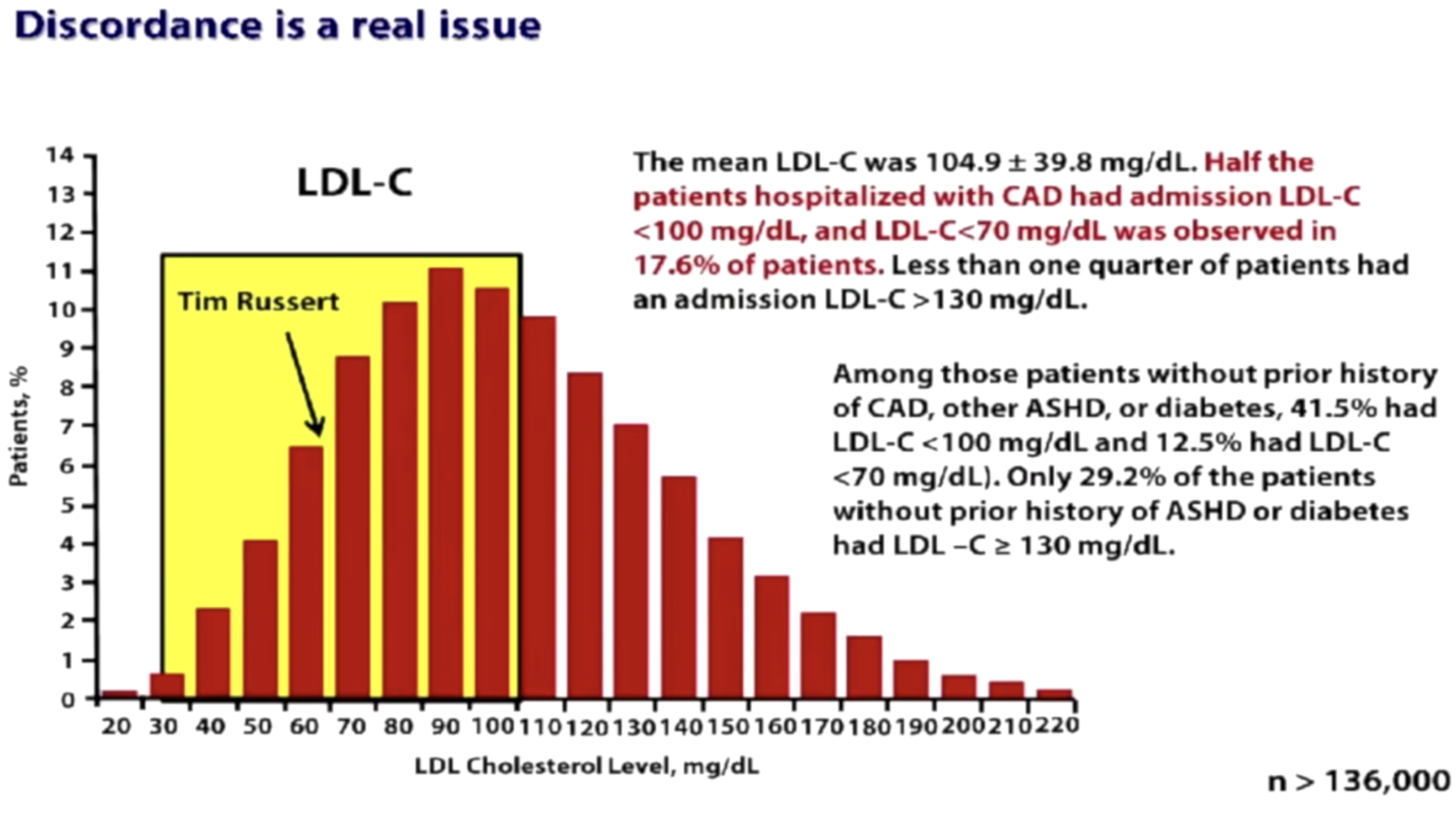
"Heart-healthy" poly unsaturated fatty acids in vegetable oils, this video argues, are actually much worse for your heart because their unsaturated form is unstable and easily oxidizes to form free radicals that oxidize your LDL which makes it sticky and causes heart disease.
LDL is just a proxy for the thing I actually care about: not dying from cardiovascular disease. Borrowing from a YouTube video from someone in a similar situation I think the next step in determining more directly what my risk of cardiovascular disease actually is would be getting a Nuclear Magnetic Resonance (NMR) profile to see a more detailed distribution of the sizes and types of fat in my blood, an echocardiogram to directly visualize my heart, a stress test to test my cardiac output, and a Calcium-Score screening heart scan to measure calcium deposits in artherosclerotic plaque in the blood vessels of my heart. The dude I'm stealing that testing blueprint from seems to be doing just fine even though his LDL-C was between 252 and 324 between 2017 and 2019.
Borrowing from Dave Feldman at Ketofest 2017 - More Dietary Fat, Less Cholesterol by Dave Feldman I could also get a Carotid Intima-Media Thickness Test to measure the diameter of important heart blood vessles and a non-invasive heart scan from Northshore University.
Dave Feldman's followup video also references two studies that seem to disprove that high LDL is a meaningful cardiovascular disease risk factor:
Is Isolated Low High-Density Lipoprotein Cholesterol a Cardiovascular Disease Risk Factor? 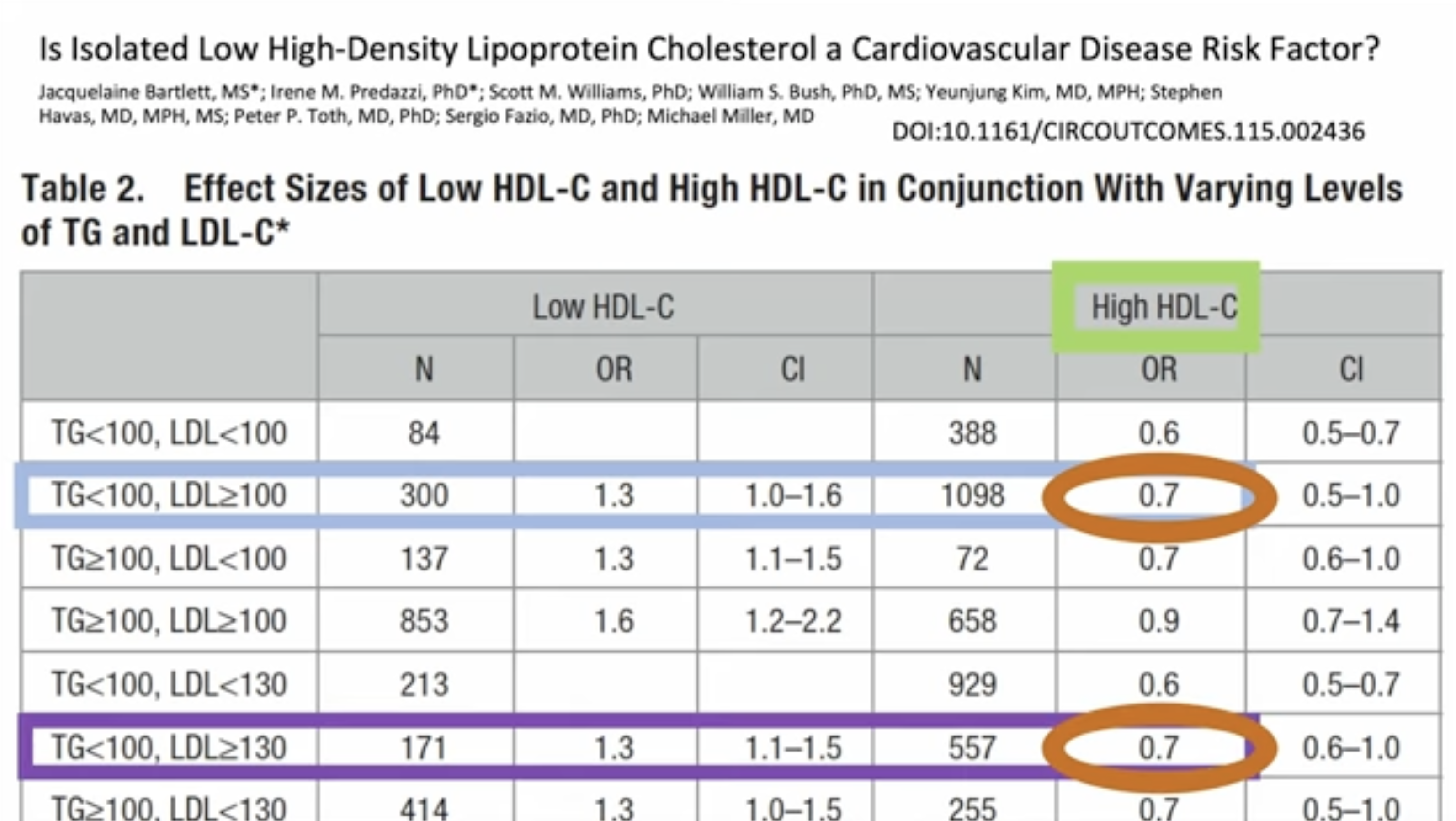
Low Triglycerides-High High-Desnity Lipoprotein Cholesterol and Risk of Ischemic Heart Disease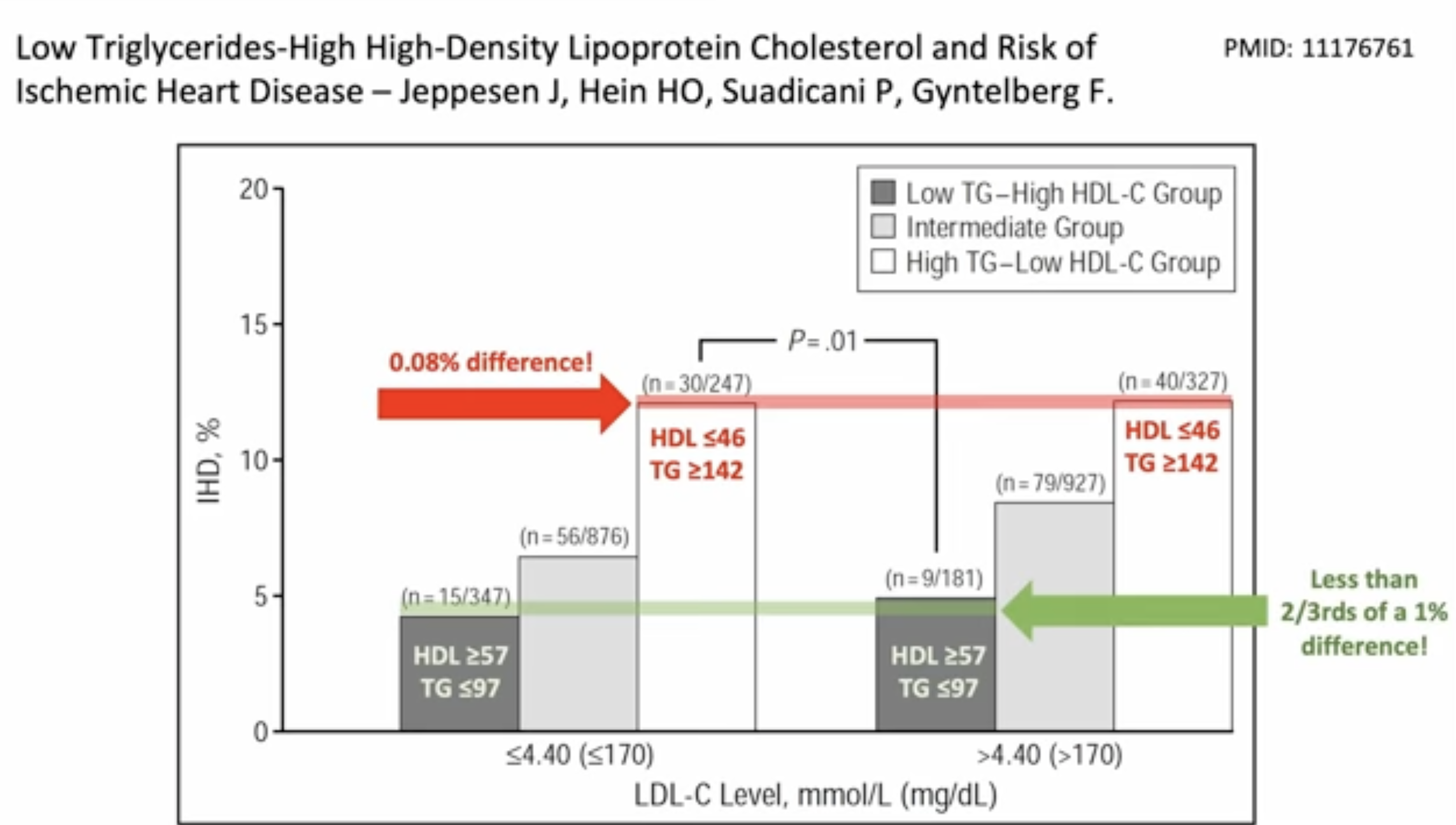
Feldman also did a fun experiment he talks about in this video where he ate just white bread and processed lean meat for about two weeks and dropped his LDL from 296mg/dL to 83mg/dL. These LDL numbers came at the cost of super high triglycerides and blood glucose. He noticed in another self-experiment that LDL seems to be inversely related to weight. He uses a CardioChek Plus Analyzer to do his own cholesterol readings.
What's the Real Story with Cholesterol and Heart Disease? by Ivor Cummins cites two studies that shows that the triglyceride to HDL ratio is a much stronger predictor of heart disease than LDL-C levels:
Study of the Use of Lipid Panels as a Marker of Insulin Resistance to Determine Cardiovascular Risk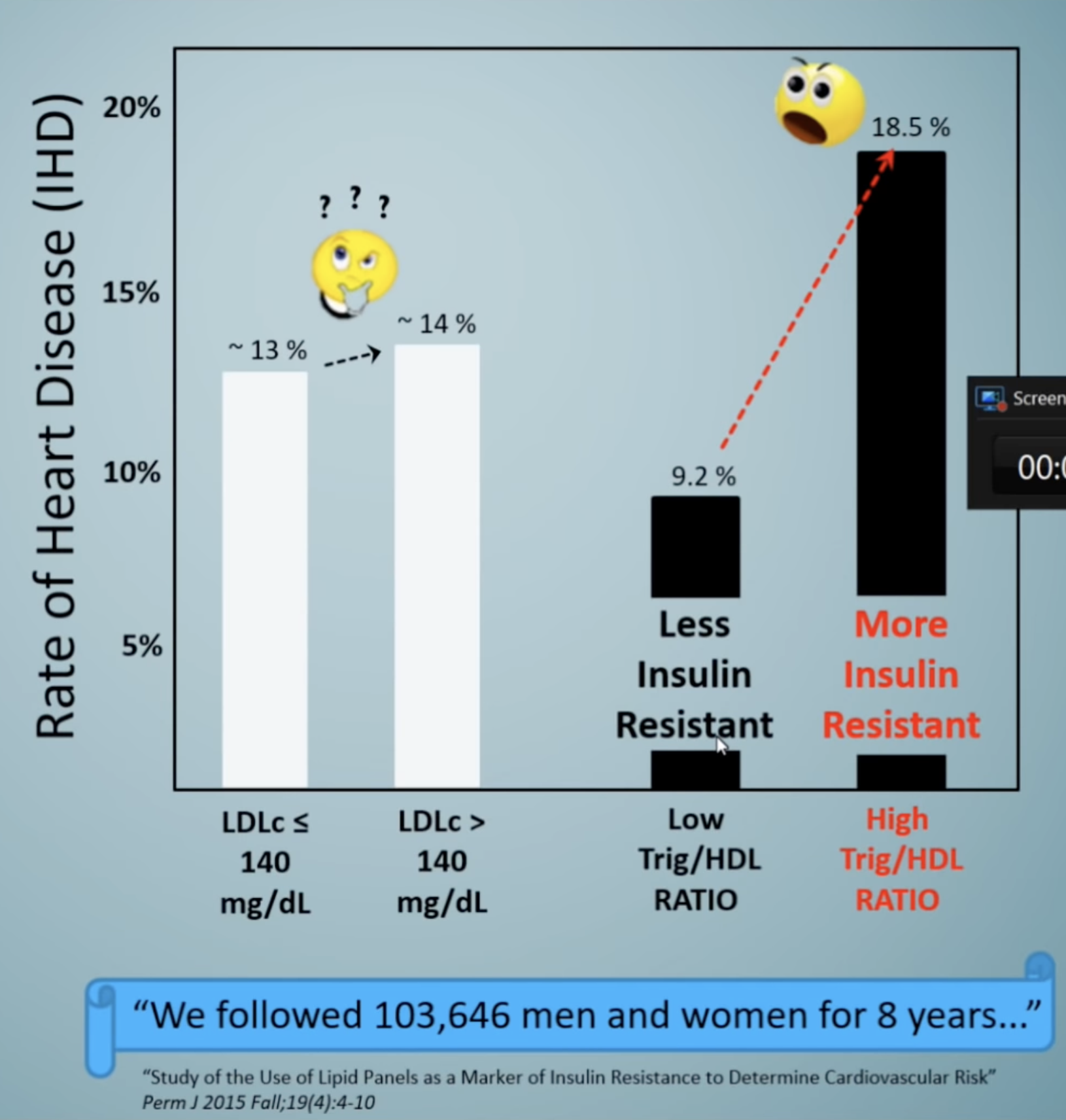
Efficacy of Cholesterol Levels and Ratios in Predicting Future Coronary Heart Disease in a Chinese Population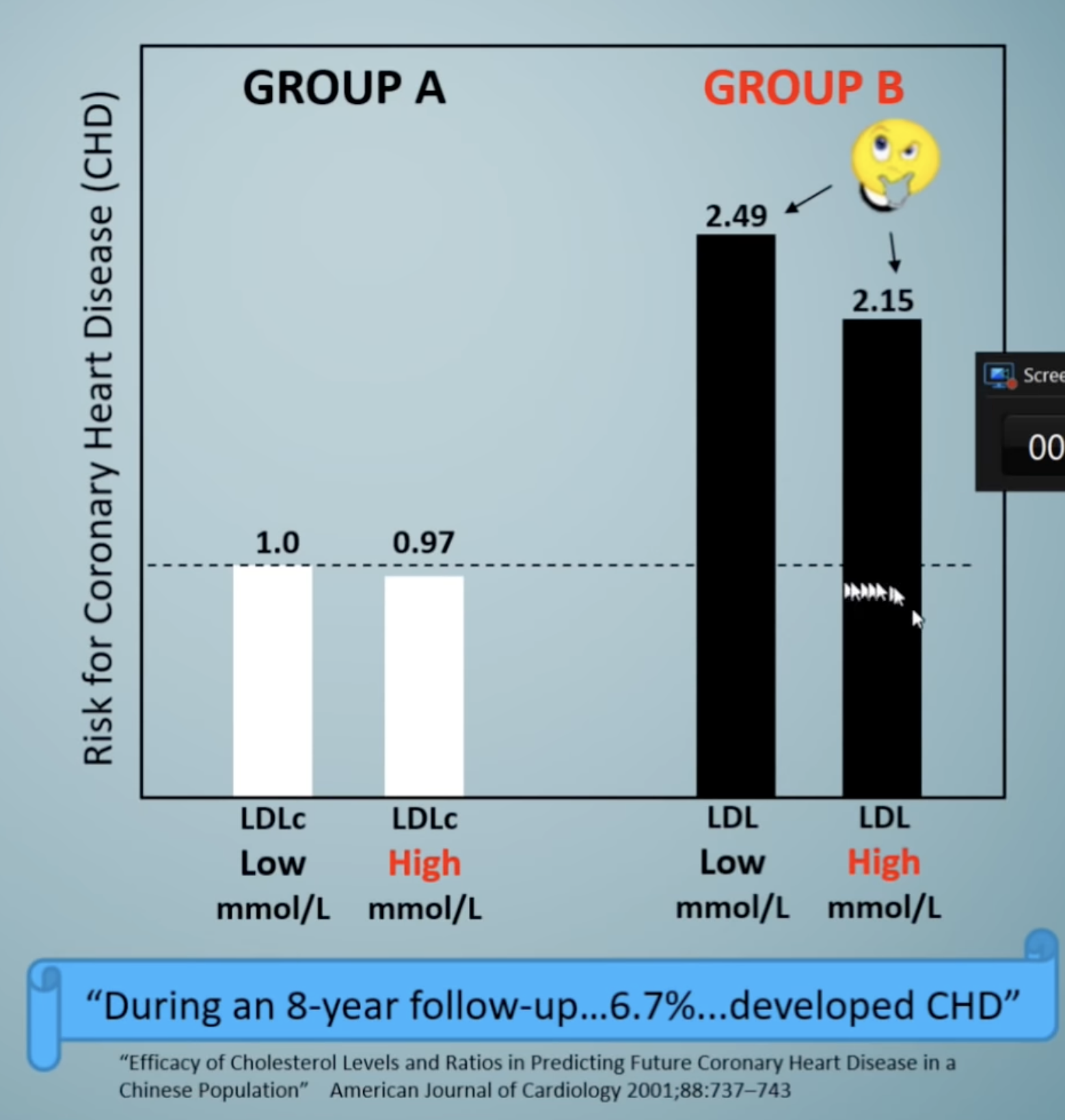
Studies #
- Long term effects of ketogenic diet in obese subjects with high cholesterol level - PubMed
- Long-term effects of a ketogenic diet in obese patients
- The national cholesterol education program diet vs a diet lower in carbohydrates and higher in protein and monounsaturated fat: a randomized trial
- Is Isolated Low High-Density Lipoprotein Cholesterol a Cardiovascular Disease Risk Factor? New Insights From the Framingham Offspring Study
- Cholesterol and all-cause mortality in elderly people from the Honolulu Heart Program: a cohort study - PubMed
- 20 years of statins: how they changed heart health forever - The University of Sydney
- Remnant cholesterol and ischemic heart disease - PubMed
- The ultimate guide to understanding your cholesterol panel and metabolic blood tests - Levels